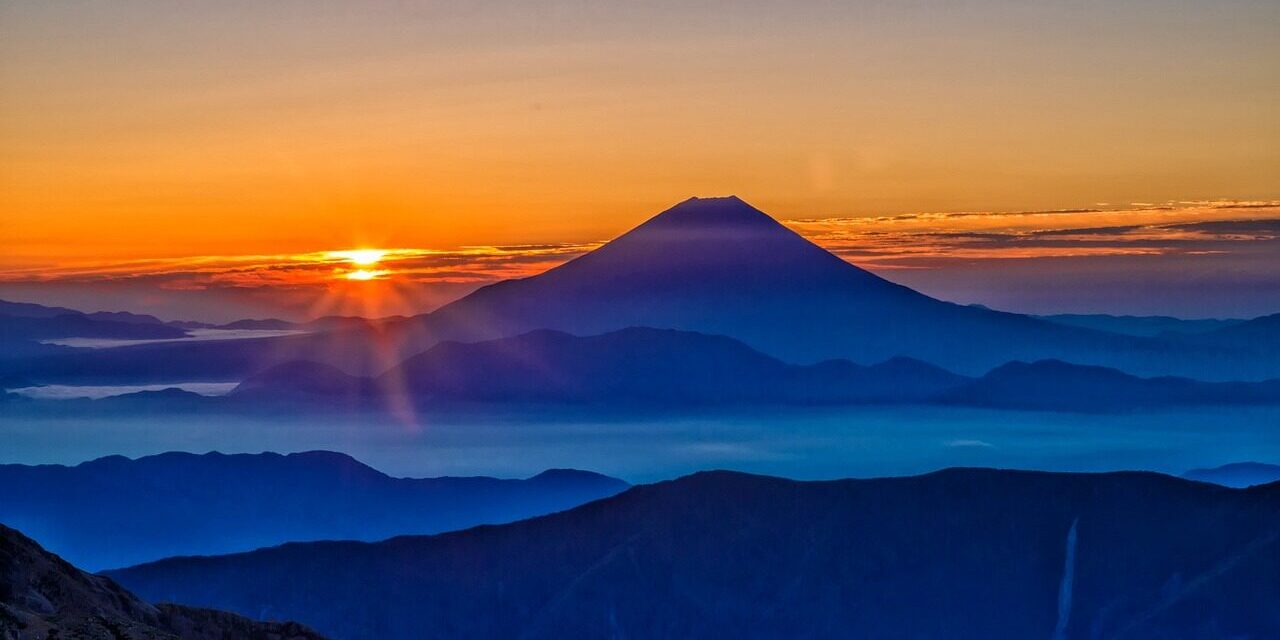The eruption of Mount Fuji, Japan’s iconic volcano, is a subject of both geological and cultural significance. Rising 3,776 meters above sea level, Mount Fuji is the tallest mountain in Japan and a UNESCO World Heritage Site. Its volcanic history is characterized by a series of eruptions spanning thousands of years, with the most recent eruption occurring in the early modern period. This essay delves into the history of Mount Fuji’s eruptions, providing comprehensive data and statistics to elucidate its geological behavior and associated risks.
Mount Fuji is a stratovolcano, a type characterized by its steep profile and periodic explosive eruptions. The volcanic history of Fuji can be divided into several distinct periods. Its first documented eruption occurred in 781 AD, marking the beginning of what is referred to as the “Fuji Volcanic Zone.” This period, known as the “Old Fuji” stage, was marked by several eruptions, the most significant of which took place between 802 and 803 AD. This phase featured lava flows and pyroclastic activity that significantly altered the surrounding landscape.
The volcano’s activity transitioned to the “Middle Fuji” stage, which lasted from approximately 864 AD until 1707 AD. This period included a number of smaller eruptions, with the most notable being that of 940 AD, which produced significant ash fall and lava flows that were documented in historical records. Geological studies indicate that during the Middle Fuji stage, the volcano experienced heightened periods of activity, contributing to the formation of the current edifice.
The most famous eruption of Mount Fuji occurred during the Edo period, specifically in December 1707. Known as the Hōei eruption, this event was significant not only for its geological impact but also for its socio-economic consequences. This eruption lasted for approximately two weeks, and it is estimated to have released around 800,000 tons of ash into the atmosphere, blanketing surrounding regions up to 60 kilometers away. Ash deposits from the Hōei eruption reached a thickness of up to 30 centimeters in nearby towns, severely impacting agriculture and leading to grain shortages in the following years.
Illustrating the scale of the Hōei eruption, it is recorded that around 90,000 people were affected directly. The event is documented in numerous historical texts, including the “Hōei earthquake” records, which detail the eruption’s seismic activity. The outpouring of ash also had detrimental effects on the local ecology, drastically altering the landscape and leading to temporary climatic changes.
After the Hōei eruption, Mount Fuji entered a period of dormancy that has persisted for more than 300 years. This dormancy, while seemingly stable, has generated concern among volcanologists and disaster preparedness agencies in Japan. Several studies indicate that the underlying magma chamber remains active, creating a potential for future eruptions. Long-term geological monitoring by the Japan Meteorological Agency (JMA) has indicated minor seismic activity linked to volcanic processes beneath Fuji, underscoring the need for vigilance.
Statistical data reflect that Mount Fuji has erupted over 15 times since 781 AD, with varying degrees of intensity. Summarizing its eruption history reveals that the volcano experienced eruptions approximately every 30 to 100 years during its active phases. The nature of eruptions and volcanic activity has evolved, shifting from predominantly explosive eruptions in earlier centuries to a potential for effusive lava flows in future events, should the magma rise to the surface.
The potential for future eruptions remains a topic of extensive research. The Japan Meteorological Agency has classified Mount Fuji as an active volcano, highlighting the importance of emergency preparedness. The agency conducts regular monitoring of ground deformation, volcanic gas emissions, and seismicity, employing advanced technology such as GPS and satellite imagery to detect early warning signs of an impending eruption.
In conclusion, the history of Mount Fuji’s eruptions reflects a complex interplay of geological forces that have shaped not only the landscape of Japan but also the culture and history of its people. The Hōei eruption serves as a crucial reminder of the volcano’s capacity for destruction, while the prolonged period of dormancy poses questions regarding future activity. As Japan continues to advance its disaster preparedness strategies, ongoing monitoring and research remain essential to mitigate the risks associated with a potentially volatile Mount Fuji. Understanding this volcano’s history is imperative for both historical knowledge and proactive disaster management in the face of nature’s formidable power.

